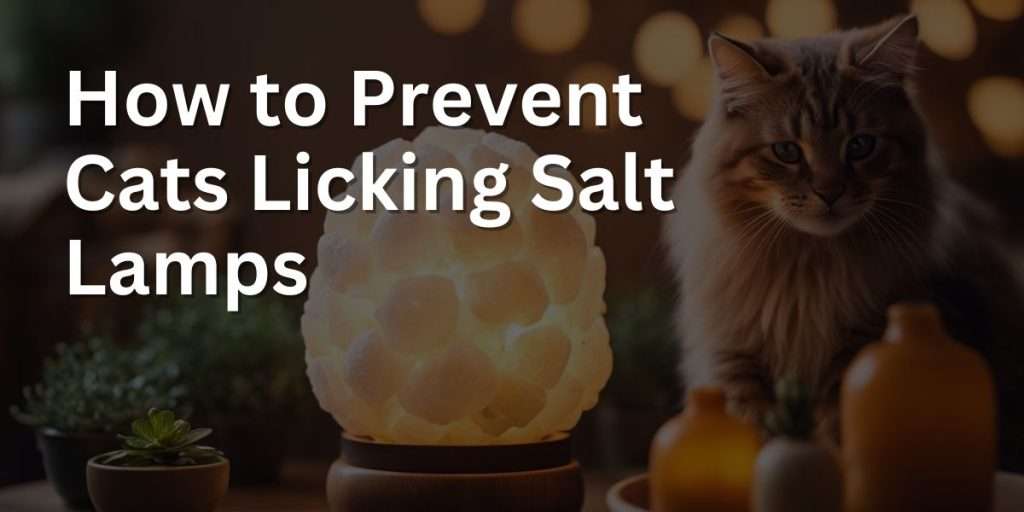The unexpected concern of salt lamps and cats is increasingly gaining attention among pet owners.
In this article, we’ll delve into the reasons why your cozy, glowing salt lamp might pose a risk to your feline friends.
Discover the hidden dangers and preventive measures to ensure your pet’s safety, so you can continue to enjoy the warm ambiance worry-free.
Stay tuned as we uncover expert advice and practical tips, tailored for cat owners who cherish both their pets and their serene home aesthetics.
Key Takeaways: Salt Lamps and Cats
Potential toxicity. Salt lamps can be toxic to cats if they lick the lamp excessively, as too much salt intake can lead to salt poisoning.
Symptoms of salt poisoning. If a cat ingests too much salt, they may show signs of vomiting, diarrhea, lethargy, incoordination, excessive thirst or urination, and even seizures or coma.
Keep lamps out of reach. To prevent the risk of salt poisoning, it’s important to keep salt lamps in a place where cats cannot access them.
Monitor your pets. If you have a salt lamp and pets, watch for any signs that they may be licking the lamp and intervene if necessary.
Consult with a vet. If you suspect your cat has licked a salt lamp and is showing adverse symptoms, seek veterinary care immediately.
Consider pet-safe alternatives. If you’re concerned about the safety of salt lamps around your pets, you may want to consider other forms of ambient lighting.
Understanding Salt Lamps
Salt lamps, especially Himalayan salt lamps, have gained popularity in recent years for their unique pink glow and aesthetically pleasing appearance. They are often used as home décor and can enhance the ambiance of any room with their warm lighting. So, you might be considering getting one for your home, but first, let’s understand what salt lamps are and how they work.
A salt lamp is made by hollowing out a block of salt crystal and placing a light source inside. When lit, it emits a soft, warm pink glow that many find calming and attractive. These lamps have become a popular choice for home décor and lighting, as they can add a touch of serenity and elegance to any space.
Salt lamps are also believed to improve air quality by releasing negative ions. These ions help neutralize positive ions produced by electronic devices, which can contribute to a less stuffy and fresher environment. Keep in mind, though, that the impact of salt lamps on air quality is still a topic of debate, and their purifying abilities might not be as powerful as dedicated air purifiers.

The Attraction of Cats to Salt Lamps
Your curious feline friend may be drawn to the warm glow and unique texture of a salt lamp. Cats are naturally curious creatures, and they love to explore new objects in their environment, which includes your Himalayan salt lamp. When cats encounter a salt lamp, they may be enticed to give it a little lick, hoping to taste the salty crystal.
You may wonder why cats are attracted to the taste of the salt lamp. Just like humans, cats enjoy the flavor of salt in moderation. However, their attraction to salt lamps can pose a danger to their health. When they lick the lamp, they ingest a higher concentration of salt than their bodies can safely manage, leading to salt poisoning.
Cats affected by salt toxicity may display symptoms such as vomiting, diarrhea, dehydration, and neurological problems. If you notice any of these symptoms, it’s essential to consult your veterinarian promptly. Early intervention can make all the difference in helping your cat recover from salt poisoning.
To protect your cat from the potentially harmful effects of a salt lamp, it’s crucial to keep the lamp out of their reach. Place the salt lamp in a high, inaccessible spot or ensure your feline friend is not around while the lamp is in use. When you’re not using the salt lamp, be sure to store it in a secure place, away from your pet’s prying paws.
Himalayan Salt Lamps and Their Potential Danger to Cats
Himalayan Salt Lamps can be a cozy addition to home decor, offering a warm, pink glow that many find soothing. However, these lamps carry a hidden risk for our feline friends. Cats are naturally curious creatures, and a Himalayan Salt Lamp can attract their attention for licking due to its texture and saltiness.
Cats can be attracted to salt lamps because of their taste. When they lick the lamp, they might ingest excessive amounts of salt, which can lead to salt poisoning. This can be dangerous, causing vomiting, diarrhea, dehydration, and neurological problems. To avoid these issues, it is important to keep salt lamps out of reach of your pets and store them safely when they are not in use.
Though Himalayan salt lamps are not inherently poisonous to cats, taking proper precautions can ensure your cat’s safety. Veterinarian Dr. Gary Richter states that salt lamps can be dangerous if cats excessively lick them, which may result in sodium toxicity. By being attentive to your cat’s behavior and keeping the lamp out of reach, you can safely enjoy the calming ambiance that Himalayan salt lamps provide.
Symptoms and Signs of Salt Toxicity in Cats
| Symptom/Sign | Description | Immediate Actions Recommended |
|---|---|---|
| Vomiting | Expulsion of stomach contents; may contain food, fluid, or mucus. | Remove salt source; provide water; consult vet ASAP. |
| Diarrhea | Loose or watery stool, potentially with increased frequency. | Keep hydrated; seek veterinary care. |
| Lethargy | Unusual tiredness or lack of energy; less responsive to stimuli. | Immediate veterinary consultation. |
| Weakness | Generalized lack of strength; may have trouble standing or walking. | Limit activity; seek veterinary care. |
| Incoordination/Ataxia | Lack of muscle control or coordination; stumbling or falling. | Prevent injury; transport to vet with care. |
| Excessive Thirst or Urination | Drinking more water than usual or urinating more frequently. | Provide constant access to fresh water. |
| Tremors/Seizures | Shaking or convulsions; may be severe and can indicate acute toxicity. | Emergency veterinary care required. |
| Swelling | Abnormal fluid accumulation in the body; can be localized or general. | Seek veterinary attention to assess cause. |
| Elevated Heart Rate | Increased heartbeat; may progress to arrhythmias. | Veterinary emergency, particularly if rhythm is off. |
| Difficulty Breathing | Labored, shallow, or rapid breathing; may indicate fluid in lungs. | Oxygen therapy may be required; emergency vet visit. |
| Coma | Loss of consciousness and unresponsiveness; a sign of severe toxicity. | Immediate emergency veterinary treatment is essential |
What Happens When Cats Consume too Much Salt
When your cat consumes too much salt, it can lead to salt poisoning. This happens because cats are attracted to salt lamps and may enjoy licking them. As a result, they can be exposed to high levels of sodium, potentially causing various health issues.
Dehydration is a common symptom of excessive salt intake in cats. When your cat consumes too much salt, their body will struggle to maintain the proper balance of fluids, leading to symptoms such as vomiting, diarrhea, and general weakness.
Salt poisoning can also cause neurological problems in cats, such as muscle and nerve dysfunction. When the sodium levels in their blood rise, it can lead to an imbalance that affects their overall functioning and well-being.
In some cases, an overdose of sodium can even be fatal for your furry friend. Therefore, it is essential to keep an eye on your cat’s behavior around salt lamps and be aware of any warning signs indicating excessive salt intake.
To prevent any potential harm, it’s essential to keep salt lamps out of reach of your pets and safely store them when not in use. By doing so, you can protect your cat from the dangers of salt poisoning and ensure their health and happiness.

How to Prevent Cats from Coming in Contact with Salt Lamps
As a cat owner, it’s essential to keep your feline friend safe from potential hazards like salt lamps. Salt lamps can be dangerous for cats as licking them can cause sodium poisoning. To prevent this, follow these friendly tips:
Make sure to place your salt lamp out of reach of your cat. If possible, set it high on a shelf or furniture that your cat cannot easily access. This will help to keep your cat safe and minimize the chances of them coming into contact with the lamp.
Provide them with plenty of fresh water. Ensuring that your cat has access to clean water can help reduce their desire to lick the salt lamp in search of a mineral source.
Consider using distraction techniques to divert your cat’s attention from the salt lamp. Toys, puzzle feeders, and interactive playtime can all help keep your cat occupied and less interested in the glowing salt lamp.
It’s also worth trying bitter-tasting deterrents on the base or cords of your salt lamp. Applying a bitter-tasting deterrent spray or gel can help to discourage your cat from licking or biting the lamp.
Don’t forget to monitor your cat’s behavior around the salt lamp. Keep an eye out for any signs of interest or curiosity, and be prepared to take further action if needed. Your vigilance can go a long way in ensuring your cat’s safety.
Frequently Asked Questions About Cats and Salt Lamps
Can salt lamps harm my cat?
Yes, salt lamps can be harmful to cats. Cats may be attracted to the glowing pink rock and investigate it, which can lead to them licking the salt lamp. This can result in sodium poisoning, which can cause symptoms such as vomiting, diarrhea, dehydration, and neurological problems.
Do cats experience salt toxicity from lamps?
Cats can experience salt toxicity from licking salt lamps. Ingesting too much salt causes water to be pulled out of their tissues and into their bloodstream, which can lead to adverse symptoms and health issues.
Is it safe to have salt lamps around pets?
While salt lamps can be a beautiful and calming addition to your home, they may not be safe for cats and other pets. If you have salt lamps, it’s essential to keep them out of reach of your pets and store them safely when not in use.
What happens if my cat licks a salt lamp?
If your cat licks a salt lamp, it can ingest too much sodium, leading to salt toxicity. This can cause a range of symptoms such as vomiting, diarrhea, neurological signs, lethargy, and even seizures. In severe cases, salt poisoning may be fatal. Remember, whilst humans can lick a salt lamp, its not advised either.
Are there any pet-friendly alternatives to salt lamps?
To prioritize your cat’s well-being, consider looking for alternative lighting options that are pet-friendly. Some options include LED lights, air-purifying plants, or aromatherapy diffusers. Be sure to research whether the specific product you choose is safe for cats before use.
How can I prevent my cat from interacting with my salt lamp?
To prevent your cat from interacting with your salt lamp, you should keep the lamp out of reach and store it safely when not in use. Additionally, consider providing your cat with engaging toys and activities to keep them occupied and prevent their curiosity from leading them towards the salt lamp.





